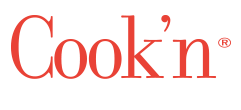Forget Resolutions—Here’s the Real Recipe for a Better Year

On December 31st, you were unstoppable. "This is my year," you declared with a glass of cheap champagne and a confidence usually reserved for infomercial hosts. You downloaded productivity apps. You bought motivational sticky notes. By noon on January 1st, you’d planned to be fluent in French, shredded like an Avenger, and—why not?—writing your memoir.
By January 2nd, you were watching Netflix in bed while eating the chocolate you "forgot" to throw out. By January 3rd, you were googling whether walking to the fridge counts as cardio. It's January 4th now, and you’re on your couch, ice cream in hand, whispering sweet nothings to your resolutions like a lover who’s about to ghost them forever.
The sticky notes remain. They laugh at you in silence.
Am I the only one who’s done this song and dance more times than he can count? Didn’t think so.
Anyway, a few years ago I came across a guy named Tim Ferriss, who sponsored the greatest alternative to setting New Year’s Resolutions I’ve ever heard of. He calls them a Past-Year Review (or just PYR).
Who’s Tim Ferriss?
Tim Ferriss is an entrepreneur, investor, and bestselling author best known for his book The 4-Hour Workweek, which popularized strategies for productivity, lifestyle design, and time optimization. He’s also the host of The Tim Ferriss Show, one of the most downloaded podcasts globally, where he interviews top performers across various fields to uncover their routines, habits, and tools for success. Known for his experimental, systems-driven approach to life, Ferriss has become a leading voice in personal development, focusing on maximizing results with minimal effort.
What is a PYR?
The PYR is super simple. It’s just three steps:
- Reflect on the Past Year:
Instead of arbitrarily deciding on new goals, Ferriss encourages you to first examine your previous year in detail. Go through your calendar week by week and list every activity, person, or commitment that had a significant impact—positive or negative. This is done in two columns: one for experiences that brought joy, satisfaction, or growth, and another for those that caused stress, frustration, or stagnation. By grounding your reflections in specific events rather than vague recollections, you ensure the review is accurate, actionable, and based on what actually happened. This step lays the foundation for a more intentional year ahead. - Identify Positive Patterns:
Once your list is complete, identify the top 20% of positive people, activities, or habits that were responsible for 80% of your happiness, success, or progress—a nod to the Pareto Principle. These patterns are high-leverage: small, impactful actions that generated significant results. Similarly, recognize recurring sources of negativity and stress. This process transforms raw reflection into meaningful insights, allowing you to identify what you should prioritize and what you need to cut out. Rather than spreading yourself thin across too many aspirations, you clarify what truly matters. - Plan for the Next Year:
With your patterns identified, the next step is simple but critical—schedule and protect your priorities. Add more of the high-impact activities, relationships, and habits directly into your calendar as non-negotiable commitments. On the other hand, consciously avoid or minimize the sources of negativity. This might mean saying “no” to certain projects, avoiding draining social engagements, or removing inefficient habits. By scheduling joy and actively safeguarding your time from distractions, you create an environment where progress feels natural, not forced.
Why PYR Might Be Better Than Traditional Goal Setting
The Past Year Review is a more pragmatic and sustainable approach to self-improvement. Traditional resolutions often fail because they are too vague, unrealistic, or detached from real-life experiences. Traditional goal setting tends to focus on aspirational outcomes—"lose weight," "save money," or "write a novel"—without addressing the habits, relationships, and environments that make success possible or failure likely.
In contrast, PYR is rooted in what has already worked or failed for you personally. It emphasizes increasing the presence of proven, positive forces in your life rather than chasing arbitrary new goals that may not align with your reality. Additionally, by removing or reducing negativity, the PYR creates a net-positive environment where productivity, happiness, and success can naturally grow.
It’s not about forcing new habits onto yourself but about optimizing your life based on tangible evidence of what works and what doesn’t. This makes PYR a powerful, results-driven framework that prioritizes self-awareness, intentionality, and simplicity.
So How Should I Use this as a Cook?
Obviously, PYR is great to apply to your whole life, not just food. But this is a cooking website, so let’s talk about the kitchen! Try these steps:
- Reflect on the Past Year:
Look back at the meals you’ve cooked over the past year, as well as your overall experience in the kitchen. Go through your calendar, cooking logs, or even photos of dishes you’ve made (if you’re the type who snaps pictures of your food). Write down two lists: one for cooking moments that brought joy, confidence, or satisfaction and one for experiences that felt draining, stressful, or uninspired. For example, did hosting a holiday dinner feel rewarding, or was it more like culinary combat? Did you love baking bread from scratch, or was it a time-sink that left you cursing your sourdough starter? By anchoring this reflection in specific events, you’ll get a clear sense of what’s adding to or detracting from your passion for cooking. - Identify Positive Patterns:
Once your lists are complete, highlight the patterns in both columns. Maybe dishes with simple techniques and quality ingredients brought you the most joy, while overly complicated recipes left you stressed. Did themed cooking (like "Taco Tuesdays") make mealtime fun and consistent? Were there particular cuisines or techniques you found exciting, like experimenting with fermentation or mastering a new type of pastry? On the other hand, you might realize you despised last-minute meal prep, disliked having too many unused perishables in the fridge, or bought gadgets that ended up gathering dust. Focus on the top 20% of positive cooking habits, tools, or recipes that delivered 80% of your culinary satisfaction, and flag the culprits that drained your energy and enthusiasm. - Plan for the Next Year:
Use these insights to intentionally structure your cooking life. Schedule more of the meals, experiences, and habits that made cooking a joy last year. For example, if you loved Sunday meal prepping, block that time into your calendar as a recurring, low-stress ritual. Plan to explore one exciting new recipe or ingredient each week if experimentation energizes you. If hosting big dinners was too much, pivot toward smaller, more relaxed gatherings or potlucks. Identify and eliminate the stressors, too—unsubscribe from the 100-recipe Pinterest boards you’ll never use, declutter tools you hate (goodbye, crepe maker), and simplify your weekly meal plans. By focusing on what you know works for you and pruning away the unnecessary, you’ll create a sustainable, intentional kitchen rhythm that makes cooking a source of fulfillment instead of
Here’s the thing: those sticky notes you bought aren’t laughing at you—they’re just waiting for better ideas. So instead of resolutions you’ll abandon by January 3rd, use them to write down what actually works: your favorite recipes, the best dinner parties, and the kitchen wins that brought you joy. Also, your garlic press is a waste of space and I will die on this hill (Alice, I hope you’re reading). Anyway, if you’re going to chase anything this year, let it be perfectly crispy roast chicken. Go forth and cook.
 Matthew Christensen
Matthew Christensen
Weekly Newsletter Contributor since 2023
Email the author! matthew@dvo.com
